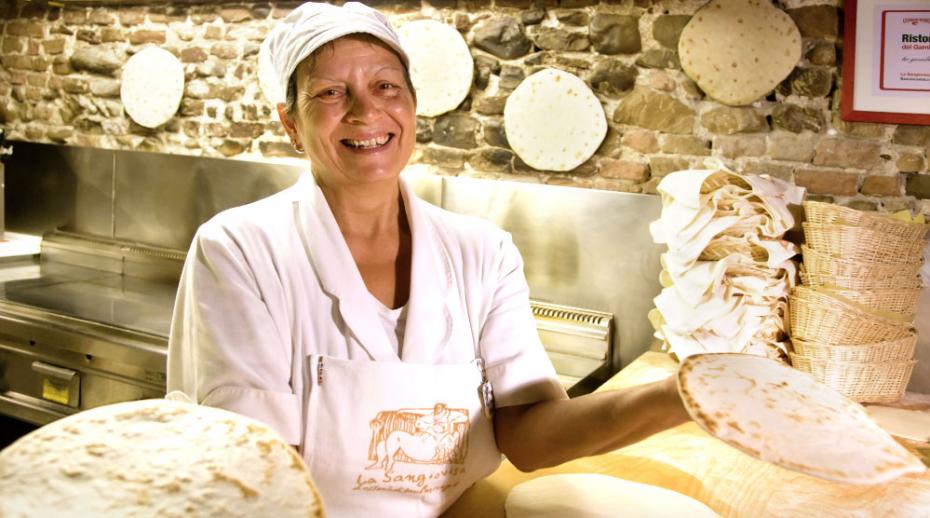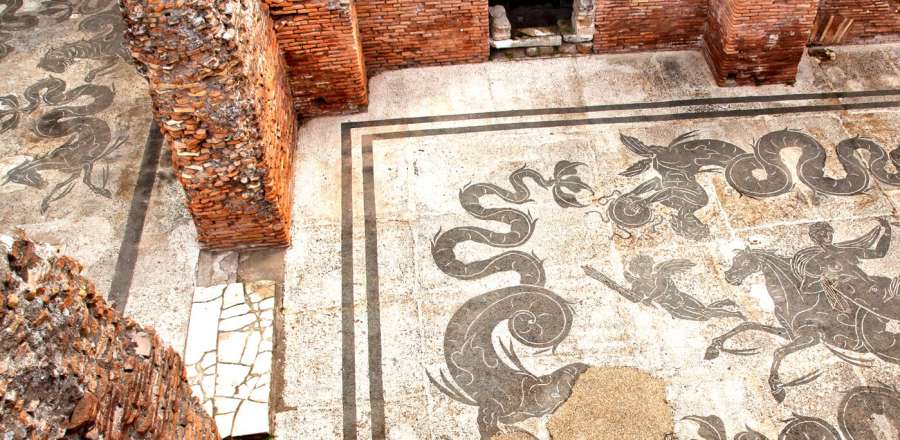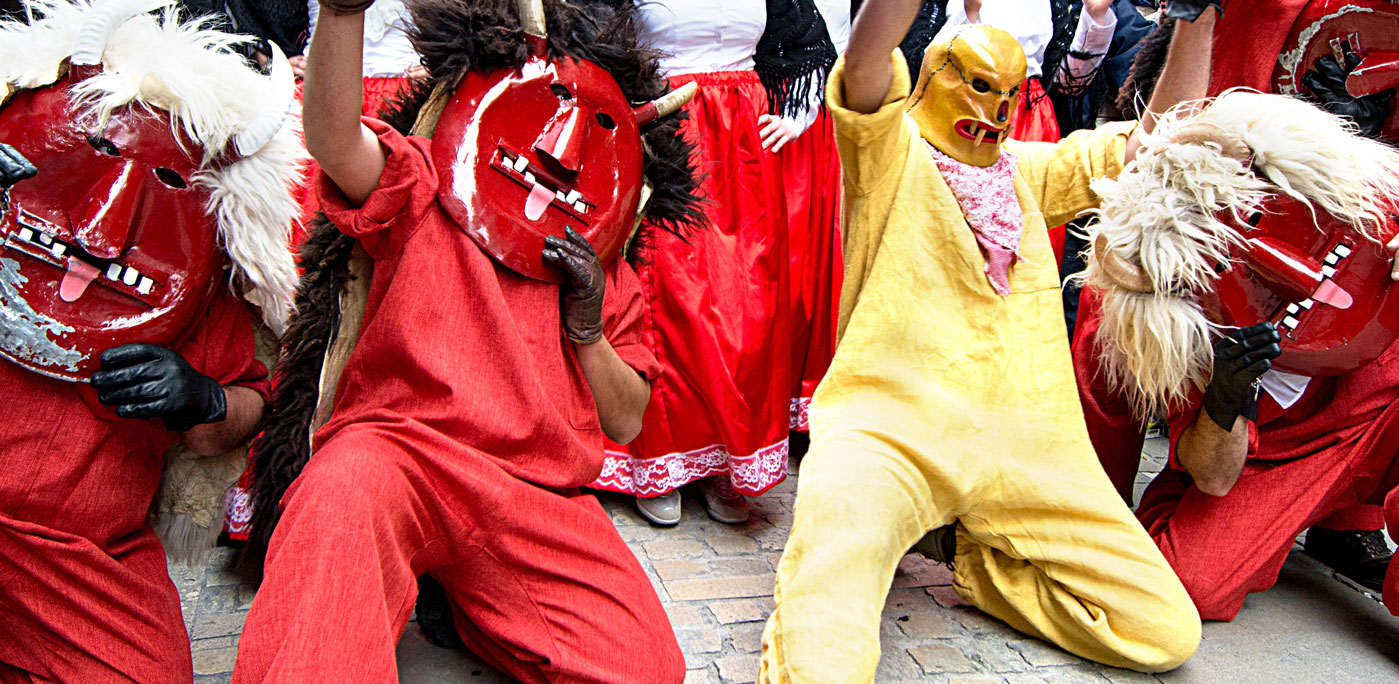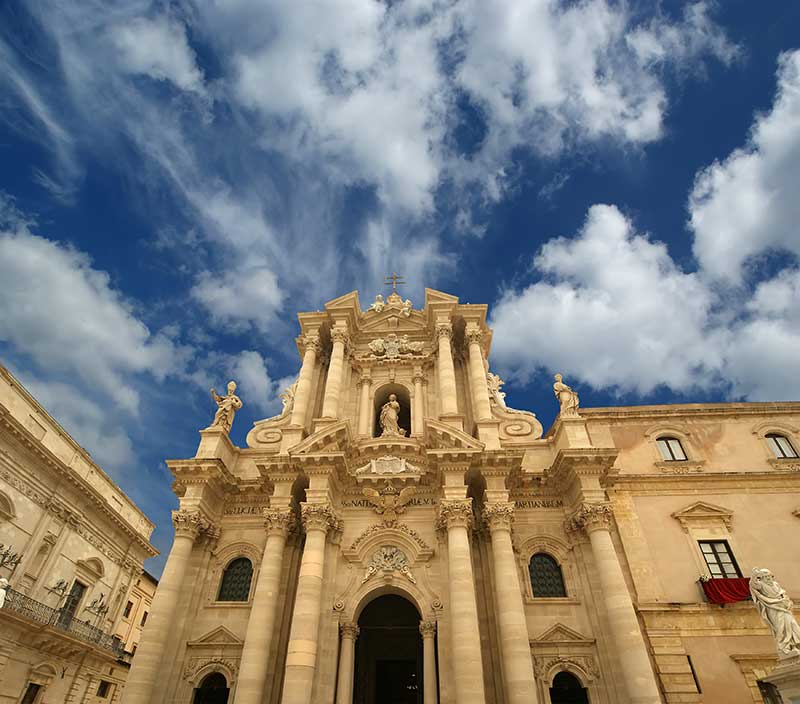The Romagnoli people have been eating piada or piadina flat bread for centuries. Indeed, it’s thought that the recipe might even date back to the Etruscans, ancient precursors to the Romans. Increasingly others are catching on to the piadina’s signature flaky crust filled with delicious sweet and savoury goodies and piadinerie kiosks are popping up throughout Italy, at European street food festivals and now over in America. They’ve even been eaten on the International Space Station. So what makes this simple regional bread so popular?
What is a Piadina
Pronounced pee-ah-dee-nah, the piadina flat bread has been a staple of life in the Romagnolo half of Italy’s central Emilia-Romagna region for centuries. It comes from the traditional “cibo dei poveri” or food of the poor and is popular because of its practical, delicious, versatility as a bread or wrap. And there are so many ways you can enjoy it and numerous combinations of accompaniments such as prosciutto, spinach or the local squacquerone cheese. Or why not spread it with traditional Italian nutella for a sweet piadina or fold it in half and stuff it with spinach, garlic and mozzarella to make a delicious cassone. With so much choice, it’s no wonder that this fabulous bread is so popular.
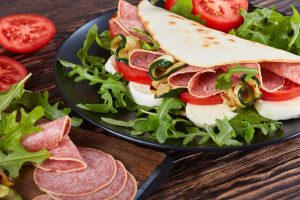
Nick-named the “pane degli angeli” or bread of the angels, piadina was historically made with pork fat or lard, known as strutto in Italian, full strength white flour, baking powder, warm water and a pinch of salt. It’s kneaded just like pizza dough or pasta before being rolled out thin into dinner plate sized circles. Originally piadinas, piadine in Italian plural, would have been cooked on a hot terracotta plate called a teggia locally, but these days it’s just as likely to be cooked on a hot griddle or in a dry frying pan. And fortunately it only takes a few short minutes to cook so your taste buds won’t have long to wait for a wonderfully crispy, slightly flaky, subtly salty, simply delicious mouthful. You might have guessed I’m a big fan!
Today the piadina is increasingly made with olive oil instead of animal fat; partly for health reasons and partly due to the rise of vegetarianism. And as it doesn’t use yeast, just a spot of bicarbonate of soda, it is much quicker to make than other breads, not needing to prove for as long. But whatever the ingredients this is the original Italian street food and its popularity is rising fast.
The origins of the piadina
The piadina is intrinsically linked back to the cucina povera traditional peasant cooking of the Romagna region, especially along Rimini’s Adriatic coastline and throughout the Apennine zone around Ravenna or Forlì inland. Legend has it that the bread dates to Etruscan cuisine before the ancient Romans although sadly we don’t have positive evidence of that. Even the origins of the name are a little fuzzy. Some suggest it’s from the Greek word for focaccia, others that it came from eastern Europe during the ancient Romans’ time. All we know is that the Romagnoli people used to call it piè that became piada and then piadina, the more Italian name.
The first written reference we have to the piadina goes back to 1371 when one Cardinal Anglico included the Romagnolo bread recipe in his book Descriptio Romandiolae. Centuries later the eminent Italian scholar and poet Giovanni Pascoli brought the word piada to official prominence in the late 1800s explaining that it was the “bread, no, the national food of the Romagnoli.” It was a very apt description.
And today this delicious bread is rightfully protected by IGP (Indicazione Geografica Protetta) certification, similar to the stricter DOP (Denominazione d’Origine Protetta), recognizing it as quality food of traditional importance to the Emillia-Romagna region. Under European Union law this means that products must follow strict regulations and can usually only be made within certain geographic boundaries. It’s a fabulous sign of respect for the flatbread and should ensure that the piadina has a long and delicious future. And that future may even be out of this world as in 2004 piadinas were eaten by Russian cosmonauts as part of their experiments into the Mediterranean diet on board the International Space Station!
Celebrating the piadina today
Today this humble flatbread is not just enjoyed in homes and piadinerie but is also celebrated at a number of sagre and festivals around Romagna every year. Marrara near the city of Ferrara kicks off 2 weeks of piadina fun in late June. And early September sees a flurry of feste in Cesenatico, Gatteo al Mare and several other towns in the province of Forlì-Cesana. Piadinerie stands do a brisk business in hot flatbread wraps whilst other stalls add color and flavor with local artisanal produce and sweets. Then Bellaria Igea Marina, a few miles down the Adriatic coast, follows shortly afterwards with their festa entitled La Pis Un Po’ Ma Tot opening on September 9th 2016. It’s a perfect time for residents and visitors alike to enjoy the fabulous street food in its natural home.
So whether you like yours straight from the griddle, folded over prosciutto, sweetened with nutella or stuffed with spinach and mozzarella it’s clear that Romagna’s piadina is a wonderfully versatile bread. And it’s exactly that versatility that’s boosting the piadina’s popularity at street food markets around Italy and gradually spreading the word worldwide. Next time you spot the characteristic flat griddles of a piadineria at a food market near you, stop off for a snack and you’ll understand why this simply delightful flatbread has earned its gastronomic protection and is so loved by the Romagnoli people. Buon appetito!
